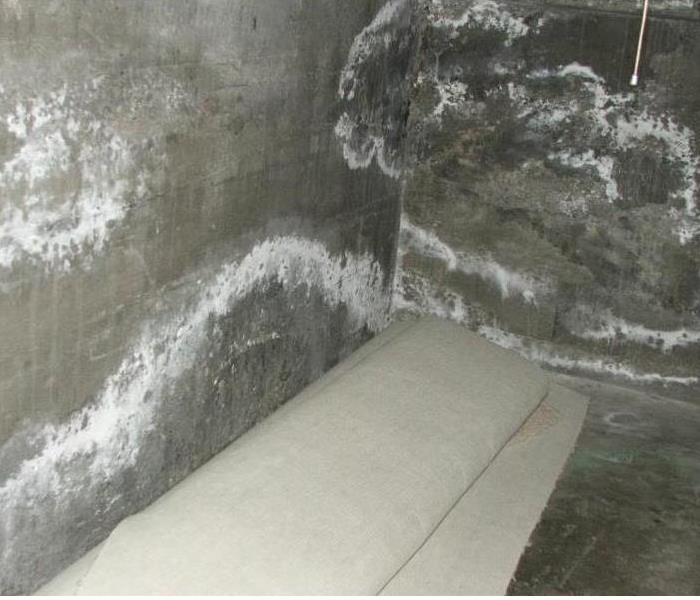Efflorescence on Concrete – Causes, Prevention and Removal
3/2/2020 (Permalink)
Causes for Formation of Efflorescence in Concrete
The formation of efflorescence in concrete is factored by many external factors.
- Presence of salts in one of the materials of concrete. Commonly salts are found in the fine aggregate or sand taken from the river beds.
- If the concrete is not cured properly, the hydration process is incomplete on which the un-hydrated products near the surface form the efflorescence on the surface of concrete.
- Slow rate of evaporation of water allowing time for salts to permeate to the surface (this is why efflorescence tends to be more of a problem during the winter months; in summer, high temperatures may cause evaporation and hence depositing of salts within the concrete rather than on the surface)
- If the water content in the concrete mix is more, it makes the concrete porous. Thus allowing the path for water and salts to come to the surface and for efflorescence.
- In wet conditions such as rainy season, the surplus water acts as a medium for the salts to transport to the surface of concrete and form crystalline white powder.
- Variability of concrete (compaction or curing) can result in localized problems where water can permeate more easily through the concrete.
Prevention of Efflorescence in Concrete
The preventive methods that can be used to avoid efflorescence in concrete are,
- Inclusion of Class-F fly ash or metakaolin can lock up significant amounts of calcium hydroxide in the concrete.
- Installing vapor barrier to prevent the movement of moisture from the sub grade to the surface of a slab.
- Application of sealers and coatings can prevent surface water from penetrating slabs.
- Waterproofing agents to be used to reduce permeability of concrete.
- Making the concrete denser will reduce the permeability of concrete to a greater extent.
- Preventing the hardened concrete from exposure to moisture by maintaining surface sealers and site drainage, and from rising groundwater by placing a plastic membrane under slabs.
- Avoiding the concrete from premature drying.
- Use of concrete ingredient such as aggregate, cement and sand which contains very less amount of salts in it.
Removal of Efflorescence in Concrete
Before removal of efflorescence in concrete, the source for the cause for the efflorescence must be found out and tried to mitigate it. Further the removal of efflorescence can be done in 3 methods,
1. Pressurized Water
Efflorescence in the concrete can be removed using the pressurized water jet. Applying pressurized water may dissolve efflorescence quickly. But care must be taken that the water after removing of efflorescence is completely dried off. If not dried, the same water can cause efflorescence to reappear.
2. Brushing
Some type of efflorescence that are easily removable can be easily removed using a stiff?bristle broom or brush. If the result is not satisfactory by dry brushing, scrub with clean water then lightly rinse the surface.
3. Dilute Acid Solution
Concentrated acid is not recommended to be applied on concrete, diluted proportion of 1:20 is used. the surface in which the acid is applied must be moist but without any free water. The applied solution should be allowed to react on the concrete surface for 10 to 15 minutes. The surface should then be thoroughly rinsed and scrubbed with lots of clean water. Repeat rinsing at least twice or until all traces of the acid solution have been removed.
Applying of Coating to Prevent Efflorescence in Concrete
Clear water repellents, silicone and acrylic coatings also may help you remove efflorescence as well. The coating will absorb water across a masonry surface and prevent efflorescence from recurring. Plus, the combination of warm water and white wine vinegar has been shown to eliminate efflorescence.






 24/7 Emergency Service
24/7 Emergency Service
